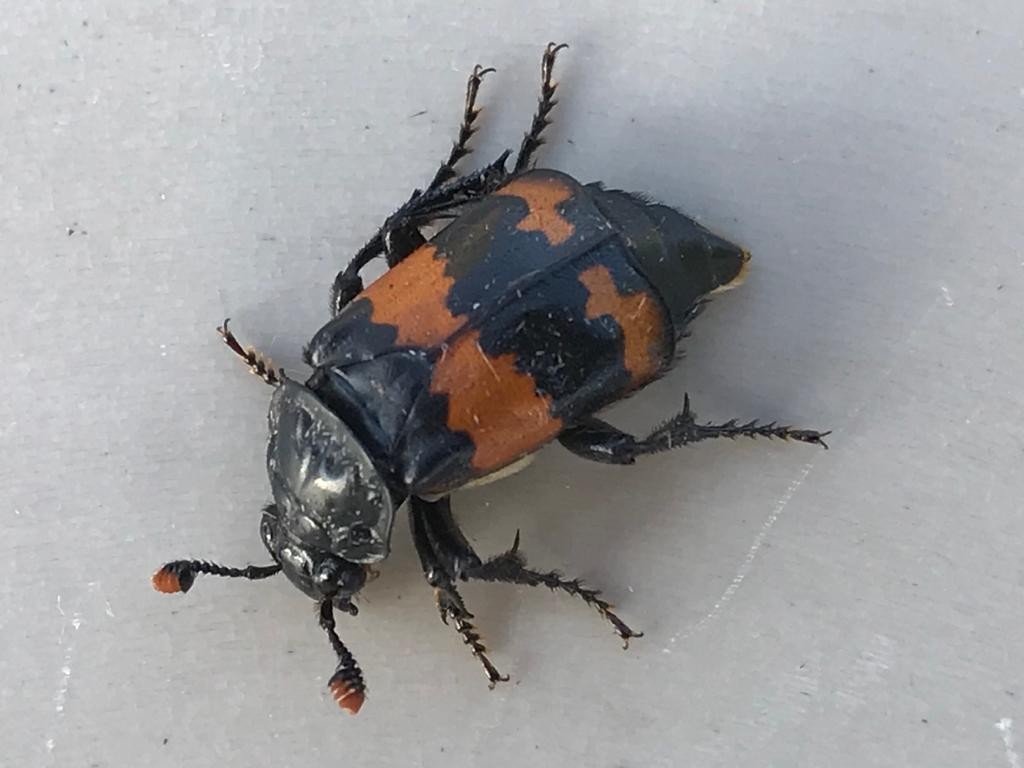What to look for this week - Burying Beetles
Published: 12 August 2020
Once we get into late summer and the nights are relatively still and warm nocturnal insect activity reaches a peak. Anyone who has taken to the road in darkness will notice a sudden increase in moth numbers and a whole variety of beetles and moths can be seen at outdoor lights, and on occasion, indoors too.
One such beastie is a burying beetle going by the name of Nicrophorus investigator. I’m afraid it doesn’t have a common name. It is one of three burying (or sexton) beetles that can be found here in Shetland.

It is an appropriate name given its apparent attraction to outdoor lights – investigating the source so it would seem. These beetles have what you might say is an interesting lifestyle. They could be considered the undertakers of the animal world! They search out the corpses of small animals or birds where they will also hope to find a mate. The pair will then defend their corpse and set about digging a hole underneath it. They clean up the corpse, removing fur or feathers, and bury it in the hole. The female then lays her eggs on the soil above the now buried body. Once the larvae hatch both the male and female beetle will care for them, utilising the buried body for food! Such parental care is pretty unusual in the world of beetles. And you have to be impressed when you realise that the beetles can apparently smell a dead body from as far as a mile away! Look carefully if you see one as they often carry a fair burden of mites, which are hitching a ride to move around from place to place.
The three species found in Shetland are fairly easy to identify. The largest, Nicophorus humator, is all black, half the size of your thumb with orange tips to its antennae. The other two have black and orange bands on the body but Nicrophorus investigator has orange tips to its antennae while Nicophorus vespilloides has black-tipped antennae.
If you see any burying beetles then we’d like to know as it will give us a clearer picture of their distribution in the islands.
We hope you have enjoyed this blog.  We rely on the generous support of our funders and supporters to continue our work on behalf of Shetland. Everything we do is about caring for Shetland's outstanding natural and cultural heritage on behalf of the community and for future generations. Donations are welcomed and are essential to our work.
We rely on the generous support of our funders and supporters to continue our work on behalf of Shetland. Everything we do is about caring for Shetland's outstanding natural and cultural heritage on behalf of the community and for future generations. Donations are welcomed and are essential to our work.

